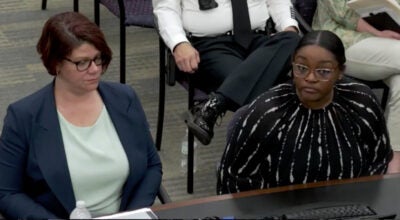Preservationist: In comparisons, older usually beats newer
Published 12:10 am Friday, September 18, 2015
By Mark Wineka
mark.wineka@salisburypost.com
SALISBURY — In all parts of the country, historic preservation is under assault. So says Donovan Rypkema, a leading expert on the financial impact of historic preservation.
Rypkema said Thursday preserving historic buildings, neighborhoods and towns is no longer an easy battle. Today, preservationists often find themselves fighting political ideology or indifference. Charges are made that historic preservation leads to higher taxes and that it fails to provide affordable housing.
Speaking at the annual conference of Preservation North Carolina, Rypkema said the response to these kinds of charges has to occur on multiple fronts.
And one of those answers should be documenting the contributions historic preservation makes and showing the multiple layers of its values.
Rypkema, a principal with PlaceEconomics in Washington, D.C., used a comparison of two Raleigh neighborhoods — one a historic district, the other a more modern subdivision dating to 1992 — to show the better economics behind the neighborhood going back to 1925.
Rypkema made sure to pick two neighborhoods similar in physical size: They both covered 114 acres.
The denser, older neighborhood has a population of 1,664 people; the modern, 507. The old neighborhood 794 houses; the new, 127.
The average home value in the old is $315,044; the new $524,077. The taxes paid per unit are $2,887 for the old; $4,805 for the new.
There are 14.5 people per acre in the old; the new, 4.4 people per acre. The square feet devoted to roads per acre is 1,045 in the old to 2,209 in the new.
The average tax revenue per acre is $22,022 in the old to $5,351 in the new, and the annual property tax revenues are $2.3 million for the older neighborhood to $610,000 for the new.
Why historic preservation works in older neighborhoods was pretty obvious.
Rypkema used a flood of more numbers and graphs to show other advantages of historic preservation: how it attracts young “knowledge workers,” how it attracts foreign investment, how it’s good for business, how there is lower-than-average foreclosures on historic properties, how it’s more affordable, why it returns more on investment and why they are better designed for “walkability.”
Rypkema noted a recent Surgeon General’s report that promotes walking and walkable communities.
Every historic district in Savannah, Georgia, has a better walk score off walkscore.com than any other part of the city, Rypkema said, and that holds true in virtually every city.
For the first time in the country’s history, Rypkema says, jobs are following people rather than people following jobs. “Knowledge workers” are moving to places where they want to be and making those decisions based on quality-of-life measurements.
Research shows that historic neighborhoods are where the growth in cities takes place first. Things people say are most important to them when they relocate are characteristics prevalent in historic neighborhoods, Rypkema said.
Rypkema, who has traveled in 49 states and 40 countries, said he loves Salisbury and has been visiting on occasion for 25 years. For the past 20 years, when he is asked some of his favorite places for preservation, Rypkema said he answers Salisbury when speaking of smaller towns.
The Preservation North Carolina annual conference continues today, with morning presentations and awards at the Meroney Theater, a luncheon at the depot and a “German Heritage Ramble” this afternoon in eastern Rowan County.
Other speakers Thursday morning included Daniel Carey, president and chief executive officer of Historic Savannah Foundation; Professor Justin Gunther of the Savannah College of Art & Design; and N.C. Department of Cultural Resources Secretary Susan Kluttz, who was mayor of Salisbury from 1997-2011.
Contact Mark Wineka at 704-797-4263.



